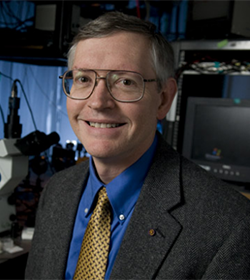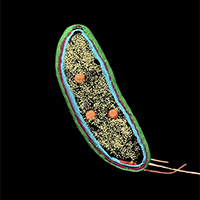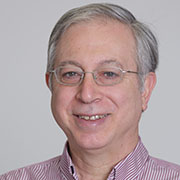Nobel Laureate W.E. Moerner Seminar on Hidden Molecules in Caulobacter Bacterium, Coronavirus, and Cells
Our Division of Biophysics, Biomedical Technology, and Computational Biosciences (BBCB) is hosting a free virtual seminar with Nobel Laureate W.E. Moerner:
 W.E. Moerner. Credit: Linda Cicero, Stanford News Service.
W.E. Moerner. Credit: Linda Cicero, Stanford News Service.
Finding the Hidden Molecules in High-Resolution Cryo-Electron Tomograms With Single-Molecule Microscopy
Tuesday, May 18, 1:30-2:30 p.m. ET
Moerner’s talk will focus on correlative super-resolution light microscopy and cryo-electron tomography. He will discuss efforts to identify the location of single protein molecules in Caulobacter and other cells at nanometer scale. He will also describe applications of super-resolution microscopy to explore coronavirus behavior in cells and to visualize other structures beyond the diffraction limit. A brief Q&A will follow the presentation, and questions can be sent in live during the videocast. Students and fellows are particularly encouraged to participate.
 This 3D video shows Caulobacter bacterium with various components highlighted: cell membranes (red and blue), protein shell (green), protein factories known as ribosomes (yellow), and storage granules (orange). Credit: Peter D. Dahlberg, W. E. Moerner Laboratory, Stanford University, and Wah Chiu Laboratory, SLAC.
This 3D video shows Caulobacter bacterium with various components highlighted: cell membranes (red and blue), protein shell (green), protein factories known as ribosomes (yellow), and storage granules (orange). Credit: Peter D. Dahlberg, W. E. Moerner Laboratory, Stanford University, and Wah Chiu Laboratory, SLAC.
Moerner won the 2014 Nobel Prize in chemistry for developing super-resolution microscopy and single-molecule spectroscopy. He serves on the board of the Society for Science, which sponsors STEM outreach to high school students through Science News and the Science Talent Search, International Science and Engineering Fair, and Broadcom MASTERS.
The seminar is part of BBCB's webinar series on advanced biomedical imaging, which is free and open to all audiences. The lectures are specifically directed to communities for technology development and biomedical research that will benefit from innovative tools and technical advances.

